Home »
Stellantis electric van production site could be at risk, according to Stellantis UK group MD, Maria Grazia Davino.
Ellesmere Port is currently an electrification hub for production of the Citroen E-Berlingo, Fiat E-Doblo, Peugeot E-Partner and Vauxhall Combo Electric.
Speaking at the Society of Motor Manufacturers and Traders (SMMT) annual summit, Davino said the site near Liverpool as well as Vauxhall’s factory in Luton could be in jeopardy if more wasn’t done by government to increase demand for zero emission vehicles.
The decision to halt production at one or both sites could come as soon as a year.
Davino said: “Stellantis UK does not stop, but Stellantis production in the UK could stop.”
Electric van production is due to start in Luton next year when it will make the medium sized electric vans in the group which include the Citroen E-Dispatch, Fiat E-Scudo, Peugeot E-Expert and Vauxhall Vivaro Electric.
“We have undertaken big investments in Ellesmere Port and in Luton, with more to come. If this market becomes hostile to us, we will enter an evaluation for producing elsewhere,” Davino explained.
The UK government has set a goal to ban sales of new petrol and diesel cars by 2035 - initially their plan was to introduce the ban in 2030.
With all parties currently on the campaign trail ahead of the 4 July general election, key climate change messages and how future governments will tackle them have become an important manifesto element.
Increasing threats from the EU to impose tariffs on Chinese built vehicles is also causing unrest in the industry.
After an EU indication that costly tariffs could be imposed on Chinese manufacturers - that would include Maxus and models including the recently launched Maxus eDeliver 5 and Maxus eDeliver 7 - several European manufacturers chastised the idea, including global Stellantis boss Carlos Tavares.
Vauxhall has announced a new scheme to encourage businesses to switch to electric vans. The offer makes the Vauxhall Combo Electric available on business lease for the same monthly cost as its diesel counterpart, the Vauxhal Combo, with identical deposit and contract terms.
Businesses can lease the Combo Electric in its base "Prime" trim for £329 per month with a £1,974 deposit, or upgrade to the "Pro" trim for £365 per month with a £2,190 deposit.
Both options come with a 60-month lease agreement and a mileage allowance of 6,000 miles per year.
Vauxhall estimates that businesses can save around £91 per month by switching to the electric Combo. This includes fuel cost savings of roughly £64 per month (based on 500 miles driven monthly) and savings of £26 per month due to the current exemption on road tax for electric vehicles.
Businesses in London's Ultra Low Emission Zone (ULEZ) will also benefit from a £9,500 scrappage grant by replacing a non-compliant diesel van with the Combo Electric.
On top of the offer there's also a three-year roadside assistance plan and an eight-year warranty on the Combo Electric's battery.
This new offer coincides with Vauxhall's recent "Energising a Better Britain" campaign, highlighting their range of electric light commercial vehicles (e-LCVs).
Vauxhall currently offers electric versions of all their LCV models, which includes Vauxhall Vivaro Electric and Vauxhall Movano Electric. Vauxhall has been the UK's best-selling electric van manufacturer for the past three years (2021, 2022, and 2023) and is currently producing the Combo Electric at Vauxhall's Ellesmere Port plant.
Production of electric vans is scheduled to begin at Vauxhall's Luton plant next year, however, Stellantis UK group MD, Maria Grazia Davino, has cast doubt on the future of both Stellantis plants in the UK.
The Vauxhall Vivaro has a towing capacity of up to 2.5-tonnes or 2,500kg. That is the total towing capacity for a braked trailer on the latest van.
It is also possible to tow an unbraked trailer of up to 750kg using a Vauxhall Vivaro.
The Vivaro towing capacity is above average for a mid-sized van. Previous versions were only capable of towing up to 2000kg, but the newest model can pull an improved 2,500kg. That makes the towing capacity of the Vauxhall Vivaro better than some of the competition, however, it is still well below the maximum that you will find on large vans like the towing capacity of a Sprinter van, or even a pick-up truck.
Whether or not it is any good for towing will also depend on which model you decide to buy. All Vivaro vans have the same towing capacity of 2.5-tonnes, irrespective of which engine they have. With 125hp and 145hp variants to choose from if you plan to tow a full trailer using the Vivaro it would be best to go for the more powerful model.
It’s not as straight-forward as saying that the Vivaro can simply tow 2.5-tonnes and that’s the end of the matter. There’s also the vehicles entire weight to consider, or the gross combination weight (GCW) or gross train weight (GTW). This is the weight of the vehicle, plus any load in the cargo area, plus the weight of whatever you are towing. This is what makes up the entire Vauxhall Vivaro towing limit, in other words its Van + Payload + Trailer.
Fortunately, this is more simple than in most vans, as the all but the double cab variants have a gross combination weight (GCW) of 5.6-tonnes or 5600kg.
Given that the gross vehicle weight (GVW) which is the weight of the van plus the maximum payload is limited to 3.1-tonnes for the very largest models, adding on the 2.5-tonnes possible for the weight of the trailer plus its payload means that you won’t fall foul of exceeding the combined weights of the van and trailer, even if you ware fully laden.
There is a slight snag. If you have the 1.5-litre engine, it gets a slightly lower gross vehicle weight of 2830kg. That means that you’ll have to be slightly more cautious with the amount of payload you put in the back of the van.
As always, our advice is to check the towing capacity and the Vauxhall Vivaro payload capacity on the plates for the vehicle. These can often be found either inside the door frames – usually the passenger side – or under the bonnet.
Vauxhall Vivaros do not come with a towbar as standard, but they can be added as a factory spec item. The ball and hook tow bar option on the Vivaro is an option for all vans and adds a 13-pin connector plug for the wiring up of a towing bar. At the time of writing it costs around £700 for the Vivaro towbar.
If you want to know how to tow a Vivaro you’ll need to find the towing eye. The towing eye location is found under the front bumper, off the side of the main chassis arm. You’ll have to get under the front of the van in order to find the towing eye, and you will also need to be considerate of the bumper itself when towing.
Stellantis ProOne was created towards the end of last year to symbolise the unification of the many Stellantis brands that now exist under its commercial vehicle umbrella. Citroen, Fiat, Peugeot and Vauxhall brands are now all built off shared platforms producing an unparalleled number of vehicles. With small, medium, and large models from four brands as well as internal combustion engine (ICE) and electric powertrains, there’s 24 individual models. Now, all of them which have been refreshed in some way, simultaneously in an unprecedented renewal of their light commercial vehicle line-up.
But the models aren’t just limited to battery electric vehicles (BEV) and diesel (and some petrol) engine models. Stellantis has also been working on incorporating hydrogen fuel cells into its van range with a mid-sized van available in France and Germany since 2022. Built as a manual conversion, off the production line, the medium-size hydrogen (built as the Vauxhall Vivaro-e Hydrogen) has enjoyed a degree of commercial success but has helped inform the production of an additional model on the large van platform chassis. Due to payload and range compromises for large BEV vans, hydrogen makes considerably more sense, increasing range, reducing “refilling” time compared to EVs and maintaining payload – all while being zero emission. Despite a slow proliferation of hydrogen filling stations across Europe, a European Commission roadmap to create refuelling points within 200km of each other across the entire network of major EU roads will enable hydrogen vans to become viable for many more customers.
However, creating a hydrogen vehicle using an existing platform is not a straightforward process. Renault-owned Hyvia has opted to install its hydrogen tanks on the roof for its first-generation van in an effort to become first to market with a large fuel cell LCV. While the next generation Renault Master (deliveries for which will begin later this year) will enable hydrogen fuel tanks to be incorporated into the chassis, Stellantis have managed to modify the configuration of their mid-sized van’s fuel cell system into the larger model thanks to its renowned ability to work for conversions – largely in the campervan segment.
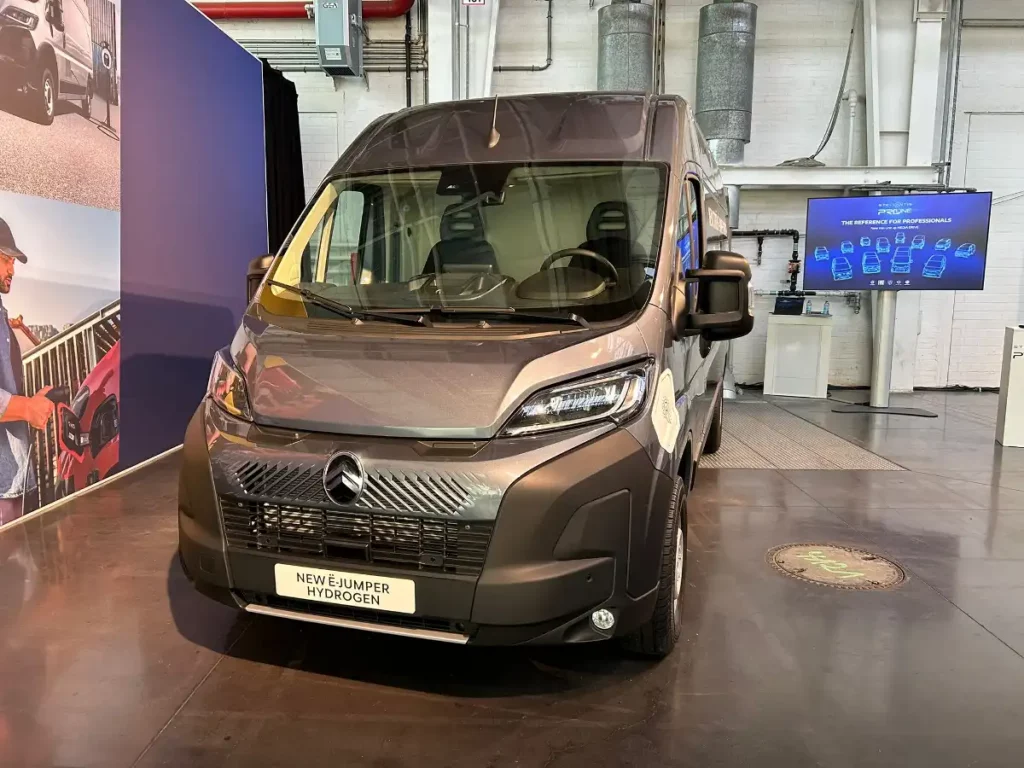
“The installation of the fuel cell system was more challenging than in the mid-sized van,” explains Stellantis hydrogen programme chief engineer, Peter Gross.
“The large van in terms of interior to exterior dimension is best in class, there’s’ nearly no empty packaging space left, so that is why the package looks quite different to the medium-sized van,” he explains.
While both medium and large vans are based on their BEV siblings. The large hydrogen vans will be available using the Citroen E-Relay platform, as well as the Fiat E-Ducato, Peugeot E-Boxer and Vauxhall Movano Electric. The medium van hydrogen fuel cell is based on the Citroen E-Dispatch, Fiat E-Scudo, Peugeot E-Expert and Vauxhal Vivaro Electric, all of which used the space under the bonnet to stack the fuel cell on top of the electric motor used to drive the front wheels. Gross explains that in the larger version this didn’t work, prompting his team to look elsewhere. They opted to use the location previously utilised by the large van’s diesel tank, located under the front seat.
“Package space was found under the front seat, there is a large diesel thank that has been removed and with some modification of the sheet metal there was a chance to put the high voltage battery and the fuel cell stack into this space.”
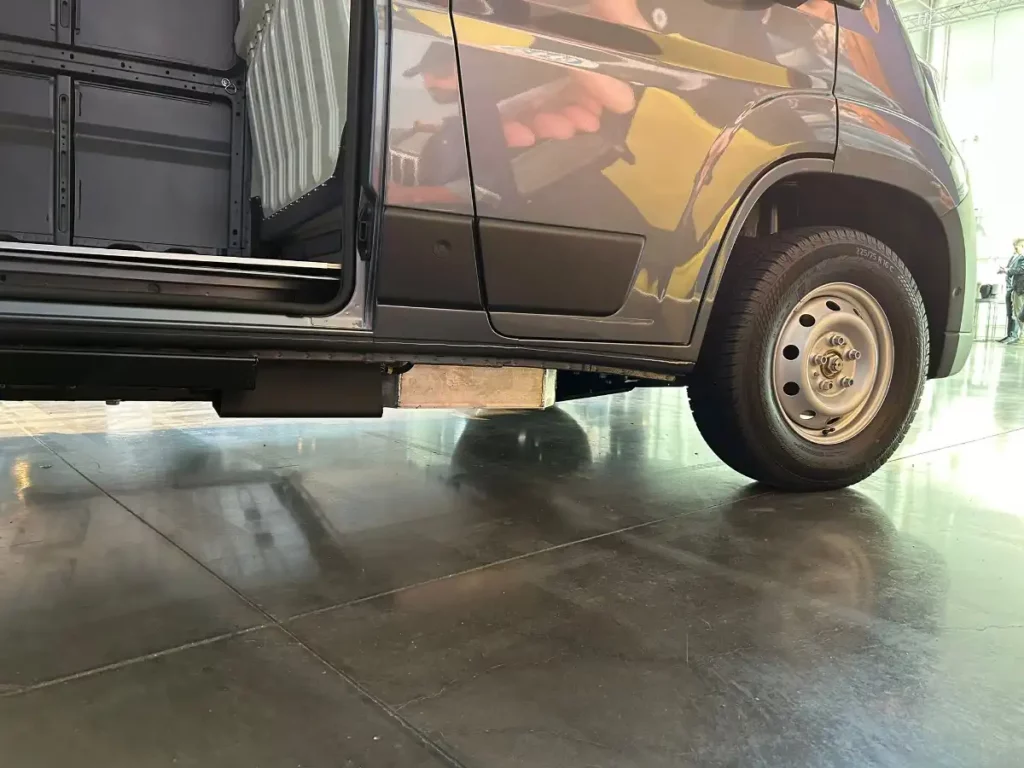
The new location has mean that the air filter now sits in the front of a van, feeding air to a cathode just behind it that is linked by pipework to the fuel cell under the seats. Hydrogen is then fed into the fuel cell from the tanks located in the rear of the van between the chassis rails. Power is then either used for propulsion or stored in the battery underneath the fuel cell. Apart from the layout, there’s also one other significant difference between the medium and large vans.
“In the mid-sized van the battery was actually in the interior of the vehicle, but in the large van it’s in the floor with the other [components],” Gross explains. The result is an easier and more logical installation that, unlike the medium-sized van, will enable the large hydrogen van to come as a right-hand-drive van as early as next year. Unfortunately, the same isn’t true of the mid-sized van. Despite Stellantis launching the van more than a year ago and having moderate success in France and Germany – two countries with a relatively established network for hydrogen refuelling – it is only now just being rolled out to additional markets. The Netherlands, Belgium and other countries in western Europe all feature on the product plan, however, the UK will not for this generation of vehicle. Gross says that it will take a few years for the medium van to be available in right hand drive with a fuel cell, which will be for the next generation of van.
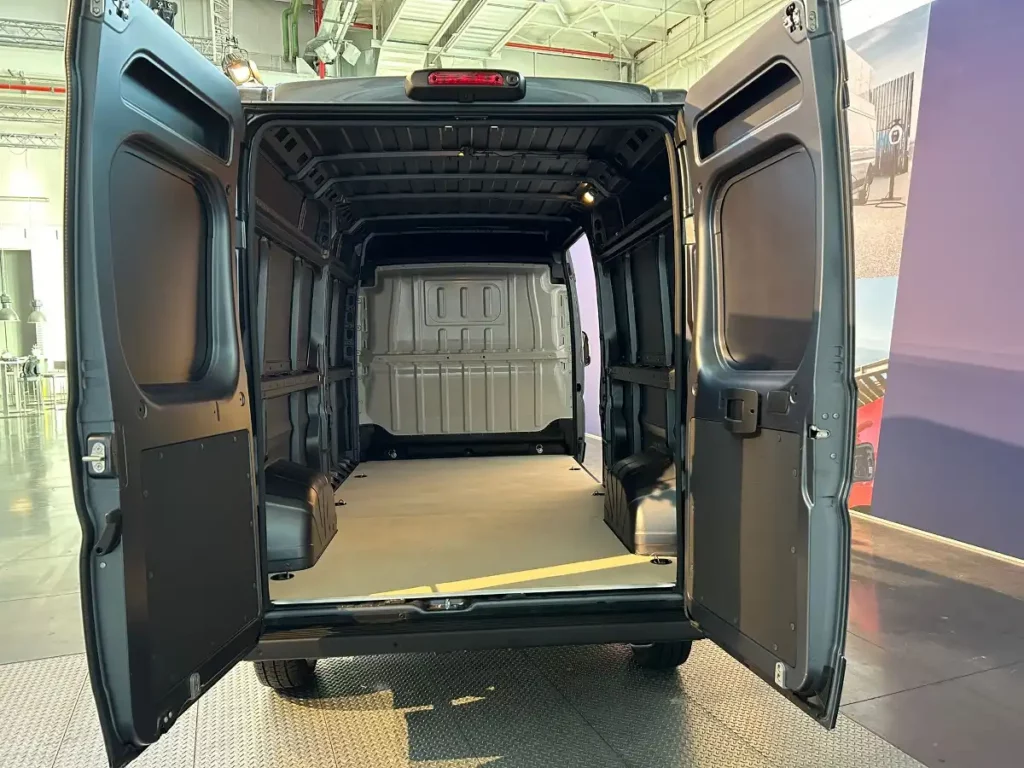
On the other hand, the large van was “considered from the very beginning” according to Gross due to our well-developed home delivery and courier services. While the UK doesn’t have a public infrastructure capable of supporting private use of hydrogen fuel cell vehicles, Stellantis is clearly expecting some private businesses to invest.
“It’s well known that the UK is very open to alternative fuels and the fuel cell proposition,” Gross explains.
“The medium van, will not come as right hand drive in the next few years. It will come with the next generation. Physical constraints are always an issue if you take an existing vehicle and want to install fuel cell components you have to live with certain restrictions,” he adds.
Despite no right-hand-drive hydrogen medium vans, Gross says they’re growing in popularity. They’ll also greater visibility later this year when being used as passenger vehicles around Paris during the Olympics.
“The market demand is growing, and it’s important to have these products available to give customers options. There is no other OEM offering mid-size and large hydrogen vans. With the European Highway, the door will be open to use these vehicles all over Europe,” Gross says referring to the EU’s hydrogen road map.
With hydrogen uptake and infrastructure being such a chicken and egg scenario, building a viable product is the best solution manufactures can have. That’s why Gross says considerable effort was made to ensure that as much hydrogen was able to be carried as possible. The addition of a fourth tank, compared to the medium van’s three, makes the large van a much more usable prospect for the fleets that are likely to be the primary buyers. That capacity, however, was only possible due to the large van’s innate ability carry payload. Luca Marengo, Stellantis commercial vehicles head of global product, attributes that to the van’s design and long standing success as a converted vehicle.
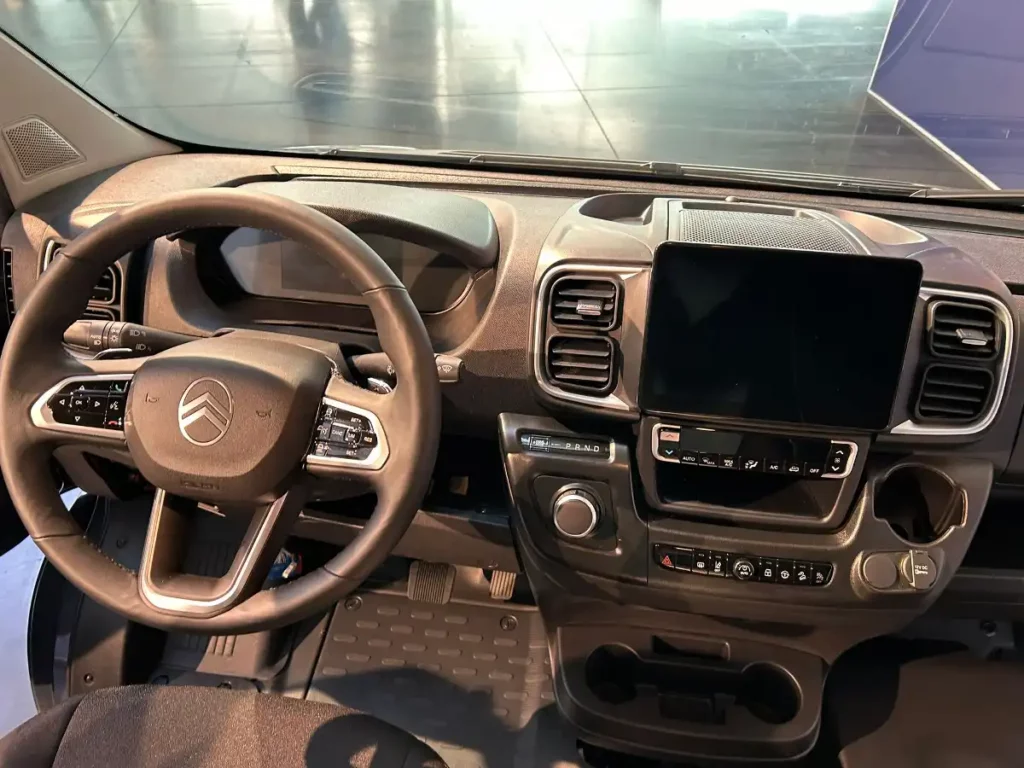
“The Ducato and these [large Stellantis] vans have always been popular with conversions, particularly motorhomes. Storing clean and waste water is something they have always done. That has helped with the space in the chassis for the hydrogen,” Marengo explains.
Ultimately the market will decide how much of a success hydrogen vans will become, but with large vans and fleet customers, they stand a fighting chance. The scalability of the design will also help with a powertrain used across medium and large vans, there’s hope that like electric motors and modular battery packs, volumes will reduce the price and bring hydrogen to the mass market.
Stellantis is one of the world’s largest car manufacturers, created in 2021 with the 50:50 merger of PSA Group Peugeot-Citroen and Fiat Chrysler Automobiles. They are amongst the largest vehicle manufacturers in the world with ambitions to become the largest.
As a result of the Stellantis buyout, the newly formed Stellantis company suddenly found itself with a lot of different owners including majority shareholders of both previous companies – namely the Peugeot family of France and the Agnelli family from Italy.
Fiat Chrysler Automobiles (FCA) was largely owned by the Agnelli family and as such took a majority stake in the new company through its business, Exor. As majority owners of PSA Group (Peugeot-Citroen), the Peugeot family also took a sizeable share in the business, as well as investment arms for the French government, Bpifrance. Additional shareholders include Chinese vehicle manufacturer Dongfeng Motor Corporation.
The resulting company was listed on the Milan and Paris Stock Exchanges as well as in America on New York Stock Exchange (NYSE) where it uses the ticker $STLA for trading.
Stellantis is technically registered and headquartered in The Netherlands. Officially, the business headquarters of Stellantis NV is located in Amsterdam, The Netherlands, with its corporate office in Taurusavenue 1, 2132 LS, Hoofddorp, The Netherlands.
Functionally, there are actually several bases of operation including Milan, Paris and Detroit. This is a result of the merging of many of the corporate entities into Stellantis and their own headquarters. Considerable cost-cutting, however, has seen a number of premises sold or the leases lapse. Perhaps most famous of all is the Lingotto building, once the headquarters of Fiat. Lingotto is most famous for its rooftop test track, immortalised in The Italian Job film. The Lingotto test track is now closed, but it is still walkable on foot. A portion of the rooftop is now used as an outside dining area for a restaurant. The iconic banked section of the Lingotto roof top test track is, however, still used for advertising and commercials. Stellantis no longer owns the Lingotto building.
The Stellantis companies are the merged parts of the PSA Group and Fiat Chrysler Automotive.
Under the merger of the two companies a huge number of iconic names came together. The full number of Stellantis brands now totals 14 car companies, with many other names consigned to the history books. So, what brands are Stellantis? The current Stellantis brands of active car companies is Arbarth, Alfa Romeo, Chrysler, Citroen, Dodge, DS Automobiles, Fiat, Jeep, Lancia, Maserati, Opel, Peugeot, RAM and Vauxhall. There are also additional non-manufacturing brands related to finance and mobility. These are Free2move and Leasys.
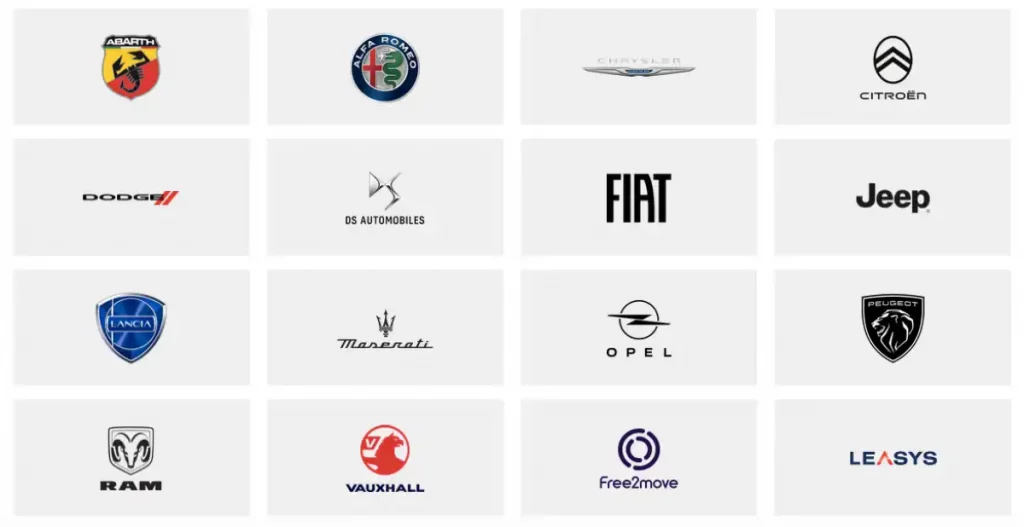
The Stellantis logo, unveiled at the launch of the company, is the world Stellantis in capital letters. The A in the centre of the word is surrounded by a circular sea of stars, while the central horizontal line of the A is also missing which makes the converging lines look like a road. The name is said to come from the Latin verb ‘stello’ which means adorned with stars.

The Stellantis CEO is Carlos Tavares. Tavares (pictured) is an accomplished automotive sector businessman, having previously been PSA Group CEP and President of the managing board. Tavares is known to be a shrewd businessman with a keen key for cost cutting and leveraging economies of scale. There have inevitably been a few Stellantis layoffs as a result of the merging of functions under the new company.

The Stellantis Chairman is John Elkann, heir to the Agnelli empire and a notable Italian businessman and industrialist. He is the CEO of Exor, part-owner of Stellantis, with controlling stakes in Ferrari, CNH Industrial (makers of Case New Holland tractors) and Iveco Group (makers of Iveco vans and trucks).
Announced in 2023, Stellantis Pro One is the collective name for the commercial vehicle brands within the Stellantis group of companies. Stellantis Pro One brands include Citroen, Fiat Professional, Opel, Peugeot, RAM and Vauxhall. Stellantis Pro One builds vans and other light commercial vehicles including pick-up trucks, software solutions for telematics and vehicle tracking, as well as manufacturing white label products for partners like Toyota vans.
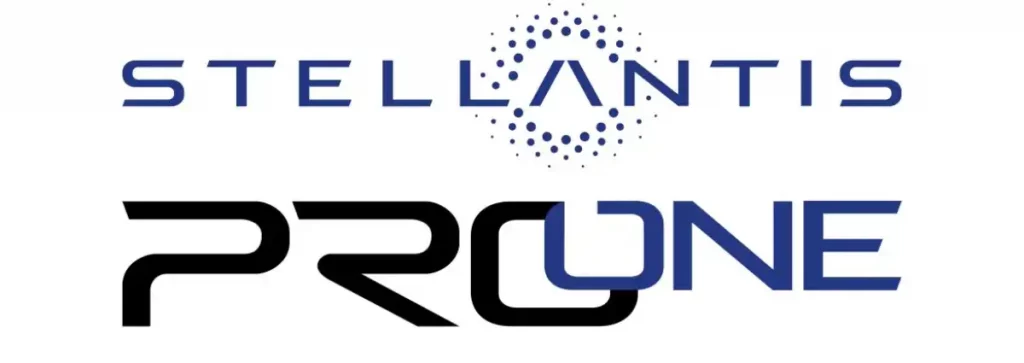
Stellantis currently makes more than 100 individual models in Europe alone with many more in markets across the world. Stellantis brands are sold in more than 130 countries.
Stellantis has the largest van product range of any automotive manufacturer. You've come to the right place to find out about them all too. The vans that Stellantis make currently includes the Citroen Berlingo, Fiat Doblo, Opel Combo, Peugeot Partner, Vauxhall Combo, Citroen Dispatch, Citroen Jumper, Fiat Scudo, Opel Vivaro, Peugeot Expert, Vauxhall Vivaro, Citroen Relay, Citroen Jumpy, Fiat Ducato, Opel Movano, Peugeot Boxer, RAM Promaster and Vauxhall Movano. There are also electric versions of each of those models, as well as passenger van versions of the car-derived vans, chassis cabs, Luton vans and other derivatives.
No. But, one of the Stellantis owners does. Ferrari was part of the Fiat empire owned by the Agnelli family. Its historic name, however, carried so much clout that it was separated from the Fiat Chrysler Automobiles group of companies in order to strengthen it and increase profits. Therefore, Stellantis does not own Ferrari, but Stellantis shareholder Exor (run by Stellantis Chairman John Elkann) does.
Yes. Jeep was one of the Chrysler brands brought into the Fiat Chrysler Automobiles group when the Detroit manufacturer hit the skids in the global financial crisis of 2008.
Yes. Dodge was another one of the Chrysler-owned names that Fiat acquired when it bailed out the American giant and took it out of Chapter 8 bankruptcy.
Yes. Maserati has long been part of the Fiat Automobile Group and along with its famous Italian sibling Alfa Romeo was part of the companies merged into the creation of Stellantis.
Yes. Stellantis owns Fiat as part of the new structure of the combined companies of Fiat Chrysler and PSA Peugeot-Citroen.
Yes, Chrysler became a part of Stellantis as part of the merger of Fiat Chrysler Automobiles and PSA Group.
No. Despite a significant number of its sales, production and even brand names being of American origin, the Stellantis company is technically Dutch and is incorporated in The Netherlands. Stellantis does contain American car brands Dodge, Jeep, RAM and Chrysler.
Stellantis has production sites in 29 countries, and sells vehicles in more than 130 countries. The number of employees on the payroll is said to be in the region of 400,000 people.
Stellantis ProOne’s new hydrogen large van will come in right-hand-drive as early as next year.
Unlike the mid-sized version of their hydrogen fuelled van – currently available in France and Germany as the Vauxhall Vivaro-e Hydrogen – the large van will be based off the Citroen E-Relay, Fiat E-Ducato, Peugeot E-Boxer and Vauxhall Movano Electric battery electric vans. It uses a combination of a 110kW motor paired to a 45kW fuel cell with an 10.5kWh battery pack.
Hydrogen storage is from four vessels providing a total of 7kg of usable H2 and an expected range of more than 500km.
In comparison, the mid-sized van uses three vessels to give the van a 400km range.
The van will be available in L3H2 and L4H3 sizes giving a total loadspace of 13m3 and 17m3 as well as a 1,300kg payload.
The large van can be fuelled at 700 Bar enabling a fill-up time of less than five minutes.
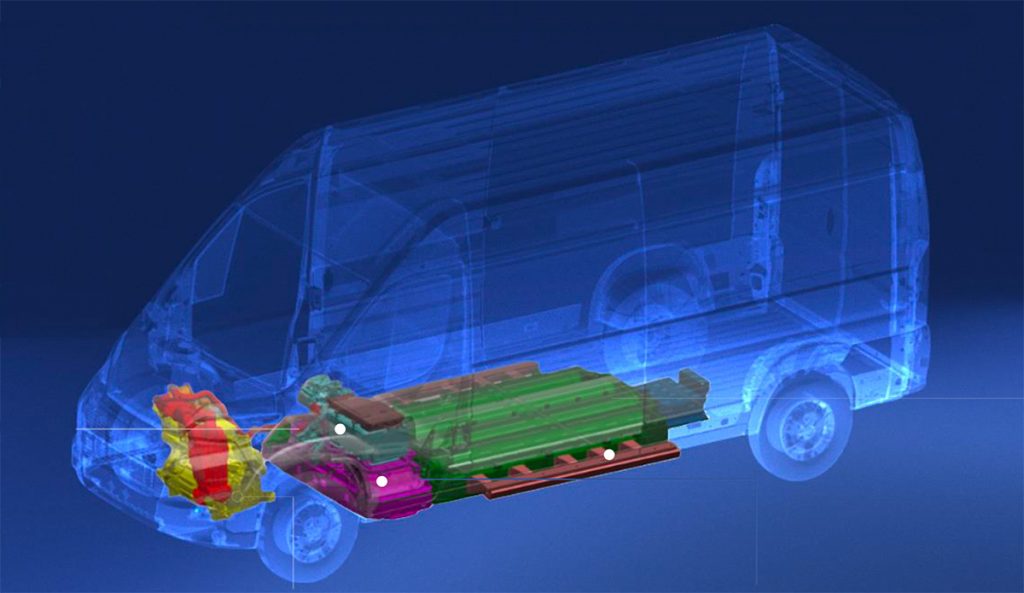
Stellantis’ decision to increase their efforts into hydrogen products are reflected in the EU Council’s decision to create the Alternative Fuels Infrastructure Regulations (AFIR). All EU countries will be required to deliver a viable hydrogen refuelling network with one 700 Bar hydrogen station located every 200km on all main corridor routes. They will also have to have 1 station for each assigned urban node in order to aid refuelling in cities. EU countries will need to have completed the network by 2030 which should create more than 500 filling stations across the EU member states.
Currently there are around 150 public H2 filling stations with the majority in Germany, France, Netherlands and Switzerland.
While the mid-sized H2 van is scheduled to be rolled out to more European countries this year, including Netherlands and Belgium, a right-hand-drive version for the UK will not come until the next generation of medium sized vans is introduced in several years time. Instead, the large van will be rolled out across Europe and to North America after 2025 when a hydrogen fuelled pick-up truck – under the RAM brand – will also be brought to market.
The UK's appetite for new light commercial vehicles (LCVs) continues to surge, with February witnessing a 2.2% uptick to 17,934 units, marking an impressive 14 months of consecutive growth. Today's figures from the Society of Motor Manufacturers and Traders (SMMT) reveal that this February's performance is the strongest since 1998, despite the month typically being slower due to procurement delays until March for the new numberplate.
Among the standout trends, registrations of vans weighing between 2.5 to 3.5 tonnes soared by 1.4%, representing nearly 70% of all new van sales as the preference for larger units persists. However, the small van categories witnessed declines, with small vans dropping by -20.5% and medium-sized vans seeing a -5.9% dip.
In a surprising turn, the niche 4x4 segment witnessed a remarkable 108.3% surge in registrations, while pickups, vital for rural and construction sectors, secured the third spot in commercial vehicle popularity, registering a 21.2% increase.
Fleet renewal, essential for decarbonisation, received a boost with the government's decision to scrap changes to double cab pick-up vehicle taxation, facilitating investments in newer, lower emission models. However, the sector advocates for a fairer and simpler approach to van taxation based on a vehicle's type approval.
While each manufacturer now faces mandates to achieve a minimum proportion of zero-emission registrations annually, February witnessed a slight decline in registrations of battery electric vans weighing up to 3.5 tonnes like the Ford E-Transit and Mercedes-Benz eSprinter. Maintaining incentives and expanding charging infrastructure, especially tailored for vans, will be pivotal in accelerating demand and achieving net zero targets swiftly.
In a resounding victory for Stellantis, latest figures from the SMMT reveal that almost a third of vans sold in the UK this year bear the badges of Stellantis brands. The automotive giant stands as the leading van manufacturer in 2024, with a 10% surge in volume, now boasting 32.45% of the market share year-to-date.
February saw Stellantis extend its dominance, topping the sales charts with a 7% spike, accounting for 32.91% of van sales. Vauxhall sold an impressive 4,376 units due in part to its noteworthy electric van presence.
Citroën Berlingo emerges as the nation's favorite small van, clinching both February and year-to-date top spots with 2,299 units sold. FIAT Professional also roars ahead with a remarkable 65% surge in February sales compared to last year.
In a major boost for the town, Luton will begin production of new electric models next year for the entire range of Stellantis medium vans sold in the UK.
The plant will mostly be producing right-hand-drive versions of the Stellantis range of vans that include the Vauxhall Vivaro Electric, Peugeot E-Expert, Citroën ë-Dispatch and Fiat Professional E-Scudo. However, the site will also be used to produce some left-hand-drive versions of the same models for export as well as the Opel Vivaro Electric.
Production will begin in the first half of 2025 in limited numbers, and the electric vans will be produced alongside their internal combustion engine counterparts.
Luton joins Ellesmere Port as the second electric model manufacturing site for Stellantis vans in the UK.
Ellesmere Port was announced as the manufacturing site for all versions of the Citroen e-Berlingo, Peugeot e-Partner, Fiat e-Doblo and Vauxhall Combo Electric in September last year, following a £100m investment to transform the plant for EV production. It is also became the first Stellantis plant globally to be dedicated to electric vehicle manufacturing.

Stellantis is currently the best-selling van manufacturer in Europe with a 30.4% market share in 2023. Their electric vehicles also have a 38.8% of the European market, while in the UK that figure rises to 47.9%. Vauxhall was the best-selling electric van manufacturer with 6,402 sales out of Stellantis' total UK sales of 10,272 vans. The majority of Vauxhall's electric van sales were for the Vivaro Electric as the number one electric van in the UK.
Vauxhall's Luton plant began life in 1905 and have been producing the Vivaro van since 2001. When Stellantis acquired Vauxhall and production was switched over from producing Renault-based vans to the Peugeot-Citroen model, the plant also took on group production of medium-sized vans, adding the Fiat Scudo in 2022.
Mark Noble, Luton Plant Director & Stellantis UK Manufacturing Lead, said: “Following the transformation of our Ellesmere Port facility to produce all-electric compact vans, I’m pleased to announce that we will commence limited production of our medium electric van in Luton from next year, when the first customer vehicles will roll off the production line. This is a fitting way to mark Luton’s 120th anniversary.”
Luton produced more than 90,000 vans last year, all of which were ICE models.
UK demand for new light commercial vehicles (LCVs) surged by 21.0% in 2023, reaching 341,455 units, as per the latest data from the Society of Motor Manufacturers and Traders (SMMT). Each month, more businesses invested in fleet renewal compared to the previous year, resulting in a record influx of zero-emission vans onto Britain’s roads.
In 2023, an additional 59,316 LCVs of various types and sizes were registered compared to 2022, following a £2 billion increase in spending by companies fulfilling essential roles in the economy, spanning from local trades to online delivery services. December notably experienced a 36.1% surge in demand, marking the strongest month since 2015. As a result of increased vehicle investment throughout the year, 2023 witnessed the highest demand for new vans since the sector’s post-pandemic recovery in 2021, with the market just -6.6% below 2019 levels.
Demand for the largest vans (weighing more than 2.5 tonnes to 3.5 tonnes) continued to rise by 9.4%, representing 66.9% of all new van registrations, driven by operators opting for payload efficiencies. Medium-sized vans (above two tonnes to 2.5 tonnes) saw the largest growth, surging by 78.4% to 57,992 units, catering to urban operators' requirements for heavy load carrying capacity and smaller vehicle sizes.
New battery electric vans (BEVs) witnessed a positive trend, reaching record volumes with a 21.0% increase to 20,253 units, constituting 5.9% of the market. December saw a remarkable 73.8% surge in BEV uptake, with the greenest vehicles representing 10.0% of registrations, marking the second-highest monthly BEV share.
The Ford Transit Custom was the best-selling model of the year, followed by its larger sibling the Ford Transit dimensions. Third place in the rankings went to the Vauxhall Vivaro dimensions and the first and only pick-up truck in the top ten was the Ford Ranger.
Despite these advancements, the Zero Emission Vehicle Mandate, mandating 10% of every van manufacturer’s sales to be BEVs this year, poses challenges. Flatlined BEV market share in 2023 compared to 2022 highlights the need to align LCV demand with supply, necessitating immediate action to address barriers to BEV uptake, particularly the shortage of van-suitable public chargers. A sustained commitment to the Plug-in Van Grant is essential for facilitating a seamless transition across all sectors and regions of the country.
Vauxhall has updated its electric lineup with the Vauxhall Combo Life Electric and Vauxhall Vivaro Life Electric models.
The Vauxhall Combo Life Electric is positioned as the ultimate family vehicle with two length options (L1 and L2) and room for ip to seven passengers. The Combo Life gets a redesigned front end incorporating new Vauxhall Vizor and LED headlights.
Inside, the fully digital cockpit gets an infotainment systems with 10-inch color touchscreens, wireless smartphone connection, and inductive charging. The Combo Life Electric offers a panoramic roof with electric sun protection, providing passengers with an enhanced travel experience.
One of the standout features is the increased range, reaching up to 205 miles (WLTP) on a single charge—approximately 18% more than the previous model. The range increase is achieved through advancements in the electric drivetrain and a more efficient heat pump for optimal battery conservation in low temperatures.
Power comes form an electric motor with 100kW (136PS) and 260Nm of torque. Top speed is limited to 84 mph. Drivers can choose between Eco, Normal, and Power driving modes, and the regenerative braking system, adjustable through paddle shifters, enhances energy efficiency. The Combo Life Electric can be rapidly charged to 80% capacity in around 30 minutes at a 100kW public charging station.

For those seeking a comfortable and ultra-modern VIP shuttle, the Vauxhall Vivaro Life Electric is the answer. Available in two lengths (4.98 meters and 5.33 meters), it accommodates up to nine people and boasts sensor-controlled electric sliding doors for easy access.
The Vivaro Life Electric, now equipped with a 75kWh battery, offers an extended range of up to 217 miles (WLTP), a significant improvement from its predecessor. The regenerative braking system and adjustable recuperation levels further enhance energy efficiency. The van can be charged to 80% capacity in approximately 38 minutes at a 100 kW DC rapid charging station.
Powered by a 100 kW/136PS electric motor, the Vivaro Life Electric accelerates briskly up to a top speed of 81 mph. Drivers can choose from three driving modes: Normal, Eco, and Power.
Both the Combo Life Electric and Vivaro Life Electric have made improvements to their safety, with up to 18 state-of-the-art assistance systems. Highlights include Adaptive Cruise Control with stop & go function, a 180-degree rear-view camera, and the adaptive IntelliLux LED Matrix light system for optimal visibility.
The redesigned ergonomic cockpit in both models includes a fully digital 10-inch driver information display and infotainment systems based on the Snapdragon Cockpit platform, offering wireless connectivity, inductive charging, and natural voice recognition.
Full UK pricing, specifications, and customer ordering details are expected to be confirmed in early 2024, further exciting electric vehicle enthusiasts and those looking for modern, efficient, and spacious transportation solutions.